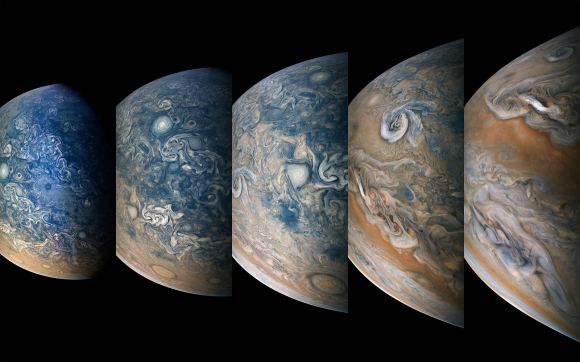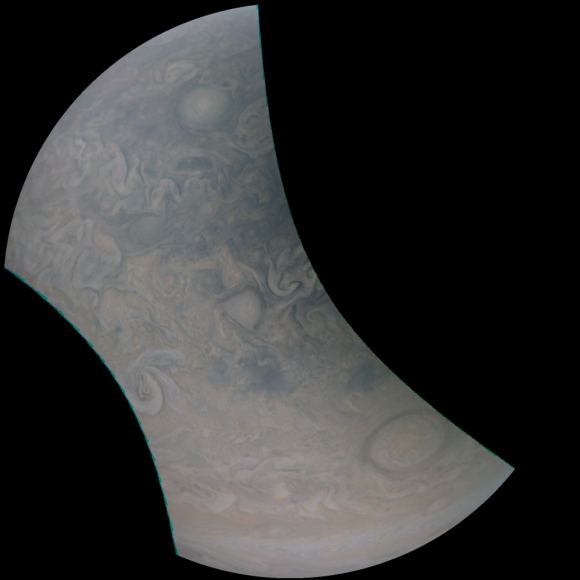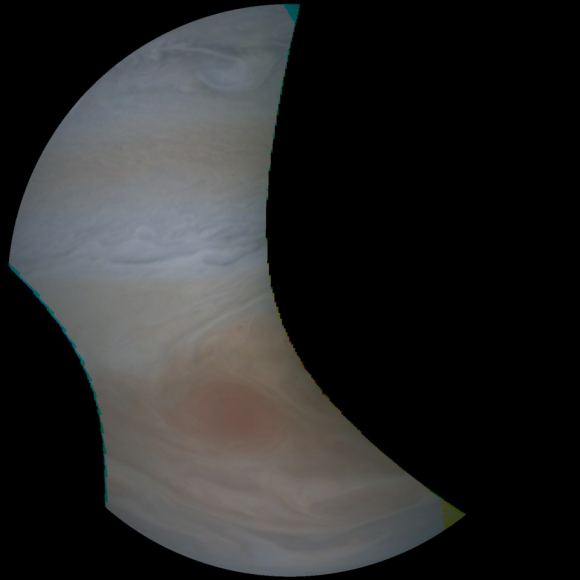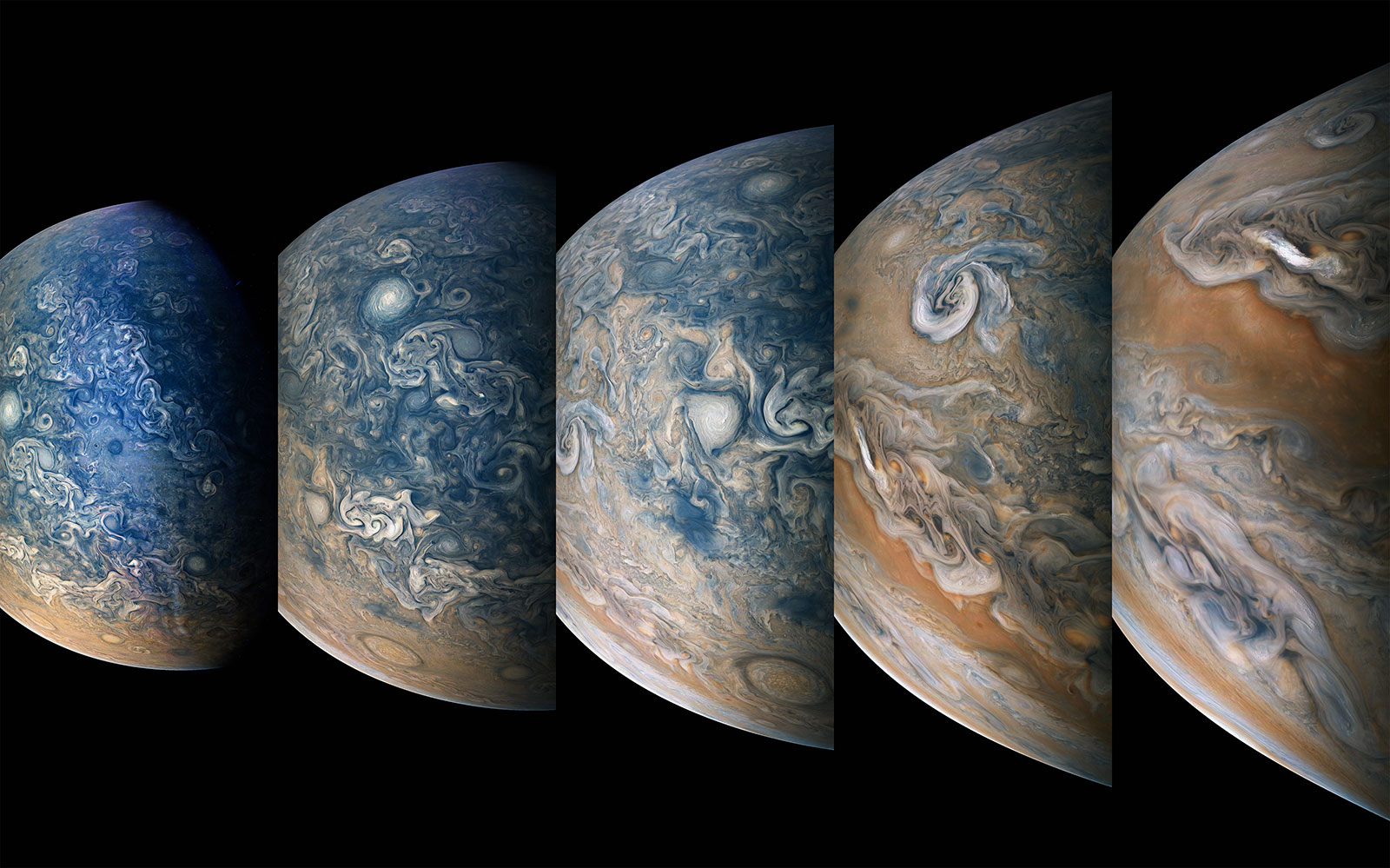In July of 2016, the Juno spacecraft established orbit around Jupiter, becoming the first spacecraft since the Galileo probe to study the planet directly. Since that time, the probe has been sending back vital information about Jupiter’s atmosphere, magnetic field and weather patterns. With every passing orbit – known as perijoves, which take place every 53 days – the probe has revealed more exciting things about this gas giant.
In addition, each perijove has been an opportunity for Juno to snap pictures with its JunoCam. With the help of the public, these pictures have been processed and turned into stunning color-enhanced images. The latest image to be released, which was processed by citizen scientists Gerald Eichstädt and Seán Doran, provides a beautiful time-lapse sequence of atmospheric features in Jupiter’s northern hemisphere.

The images were taken (from left to right) between 12:54 a.m. and 1:11 a.m. EDT on July 16th (9:54 p.m. and 10:11 p.m. PDT on July 15th) during the spacecraft’s 14th perijove maneuver. At the time, Juno was passing over Jupiter’s northern hemisphere, where its altitude ranged from about 25,300 to 6,200 km (15,700 to 3,900 mil) above the planet’s cloud tops.
Among them are the anticyclonic white oval (called N5-AWO), which can be seen at center left of the first image at far left and appears slightly higher in the second and third images. Then there is the Little Red Spot, a massive counterclockwise rotating storm that appears as a white oval in the gas giant’s southern hemisphere. The miniature version of Jupiter’s Great Red Spot, this feature is apparent at the bottom of the second and third images.

Last, but not least, there is the North North Temperate Belt, a predominantly cyclonic feature that rotates in the same direction as the planet. This Belt appears as a reddish-orange band and is most prominently displayed in the fourth and fifth images.
Like all JunoCam raw pictures, the series of photos that went into making this image product are available for the public to peruse and process at the Southwest Research Institute’s (SwRI) JunoCam page.



It’s a shame you only show the color enhanced pictures.
It’s more interesting to see a true-color picture.
A shame is not to read the article to the end, before negative comments.
See: “Like all JunoCam raw pictures, the series of photos that went into making this image product are available for the public to peruse and process at the Southwest Research Institute’s (SwRI) JunoCam page.”
Still, it could use some. I will add them now.